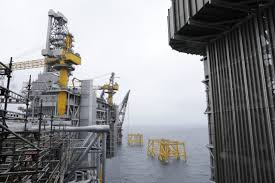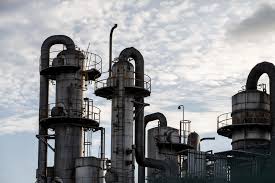What is Offshore in halul offshore services company Oil and Gas? Exploring the Basics When discussing the oil and gas industry, the term "offshore" frequently arises. But what exactly does it mean in the context of this sector? In this article, we will delve into the basics of what is offshore in oil and gas, exploring the various aspects and implications of this critical component of the industry. From offshore drilling to production to transportation, we will examine the key elements that make up the offshore sector and its significance in the larger oil and gas landscape. Join us as we unravel the mysteries and intricacies of offshore operations in the oil and gas industry.
Offshore in the oil and gas industry refers to the exploration, extraction, and production of oil and natural gas resources from beneath the seabed. This typically involves drilling wells in bodies of water, such as oceans and seas, to access reservoirs of oil and gas. Offshore operations can vary in complexity, with some involving fixed platforms located on the seabed, while others may require floating structures or mobile drilling units. Offshore exploration and production require specialized equipment and technologies to overcome the challenges of operating in a marine environment, such as harsh weather halul offshore services co conditions and deep water depths. Significant investment is also required for offshore projects due to the high costs associated with drilling, subsea infrastructure, and safety protocols. Offshore operations play a crucial role in meeting global energy demand and are a key component of the oil and gas industry.
Understanding Offshore Operations in the Oil and Gas Industry
top offshore oil and gas companies

Understanding Offshore Operations in the Oil and Gas Industry involves having knowledge of complex drilling technologies, production processes, and safety procedures specific to offshore platforms. This includes an understanding of offshore rig systems, subsea equipment, and the challenges of operating in harsh marine environments. Additionally, a comprehensive understanding of regulatory compliance, offshore oil and gas services environmental considerations, and project management is crucial for successful offshore operations in the oil and gas industry.
The Role of Offshore Platforms in Oil and Gas Exploration

Offshore platforms are essential in the exploration and production of oil and gas in offshore areas. These platforms provide a stable base for drilling rigs and production facilities, allowing for the extraction of oil and gas from beneath the seafloor. They also serve as gathering points for the processed oil and gas, which can then be transported to onshore refineries and processing facilities. Offshore platforms come in various types, including fixed platforms, compliant towers, semi-submersible platforms, and tension-leg platforms. Each type is designed to suit different water depths, environmental conditions, and production requirements. In addition to providing a base for drilling and production operations, offshore platforms also house living quarters for the personnel working on the platforms, as well as facilities for storing and processing the extracted oil and gas. Overall, offshore platforms play a crucial role in enabling the exploration and extraction of oil and gas from offshore reserves, helping to meet global energy demands.
Challenges and Advantages of Offshore Drilling in the Oil Industry
Challenges of offshore drilling in the oil industry include environmental risks, such as oil spills and habitat destruction, as well as safety concerns for workers due to working in remote and hazardous conditions. Additionally, offshore drilling requires significant capital investment and technical expertise, making it a complex and costly endeavor for oil companies. Advantages of offshore drilling include access to untapped oil reserves, which can contribute to energy security and economic growth. Offshore drilling also enables the production of larger quantities of oil compared to onshore drilling, and it can create employment opportunities for local communities. Overall, the decision to engage in offshore drilling involves weighing these challenges and advantages to determine the potential impact on the environment, economy, and society.
A Closer Look at Offshore Production and Extraction Techniques
A Closer Look at Offshore Production and Extraction Techniques involves the examination of the processes and technologies used to extract oil and gas from offshore reserves. This includes drilling techniques, platform designs, and safety measures implemented to protect the environment and workers. Additionally, the exploration of new and innovative technologies to improve efficiency and reduce the environmental impact of offshore production is a key focus of this study. Understanding these techniques is essential for managing offshore resources effectively and sustainably.
The Future of Offshore Exploration in the Oil and Gas Sector
The future of offshore exploration in the oil and gas sector is influenced by several key factors. These include technological advancements in exploration and production techniques, shifting market dynamics and demand, regulatory and environmental concerns, and the potential impact of alternative energy sources. Technological advancements, such as 3D seismic imaging and advanced drilling techniques, have enabled companies to access previously inaccessible reserves in deeper waters. This has expanded the potential for offshore exploration and production, particularly in frontier regions. Shifting market dynamics, including fluctuations in oil and gas prices and evolving energy demand, continue to impact investment decisions in offshore exploration. As global efforts to transition to cleaner energy sources intensify, there is increasing pressure on the oil and gas industry to adapt and explore more sustainable and cost-effective ways of extracting resources. Regulatory and environmental concerns are also driving changes in offshore exploration. Stricter regulations and increased environmental awareness have led to the implementation of more stringent safety and environmental standards, adding complexity and cost to offshore operations. The potential impact of alternative energy sources, such as renewables and electrification, poses a long-term challenge for offshore exploration in the oil and gas sector. As the world moves towards a lower carbon future, the demand for traditional fossil fuels may decline, affecting the economics of offshore exploration projects. Overall, the future of offshore exploration in the oil and gas sector will be shaped by a complex interplay of technological, market, regulatory, and environmental factors. Companies will need to navigate these challenges and opportunities to remain competitive and resilient in the evolving energy landscape.
In conclusion, offshore in oil and gas refers to the exploration, drilling, and production of oil and gas reserves located beneath the seabed. This involves complex operations and advanced technologies to extract valuable resources from beneath the ocean floor. Understanding the basics of offshore operations is crucial for anyone working in the oil and gas industry, as it presents unique challenges and opportunities. What is offshore in oil and gas encompasses a range of activities that contribute significantly to global energy production and the economy.
oil and gas offshore companies